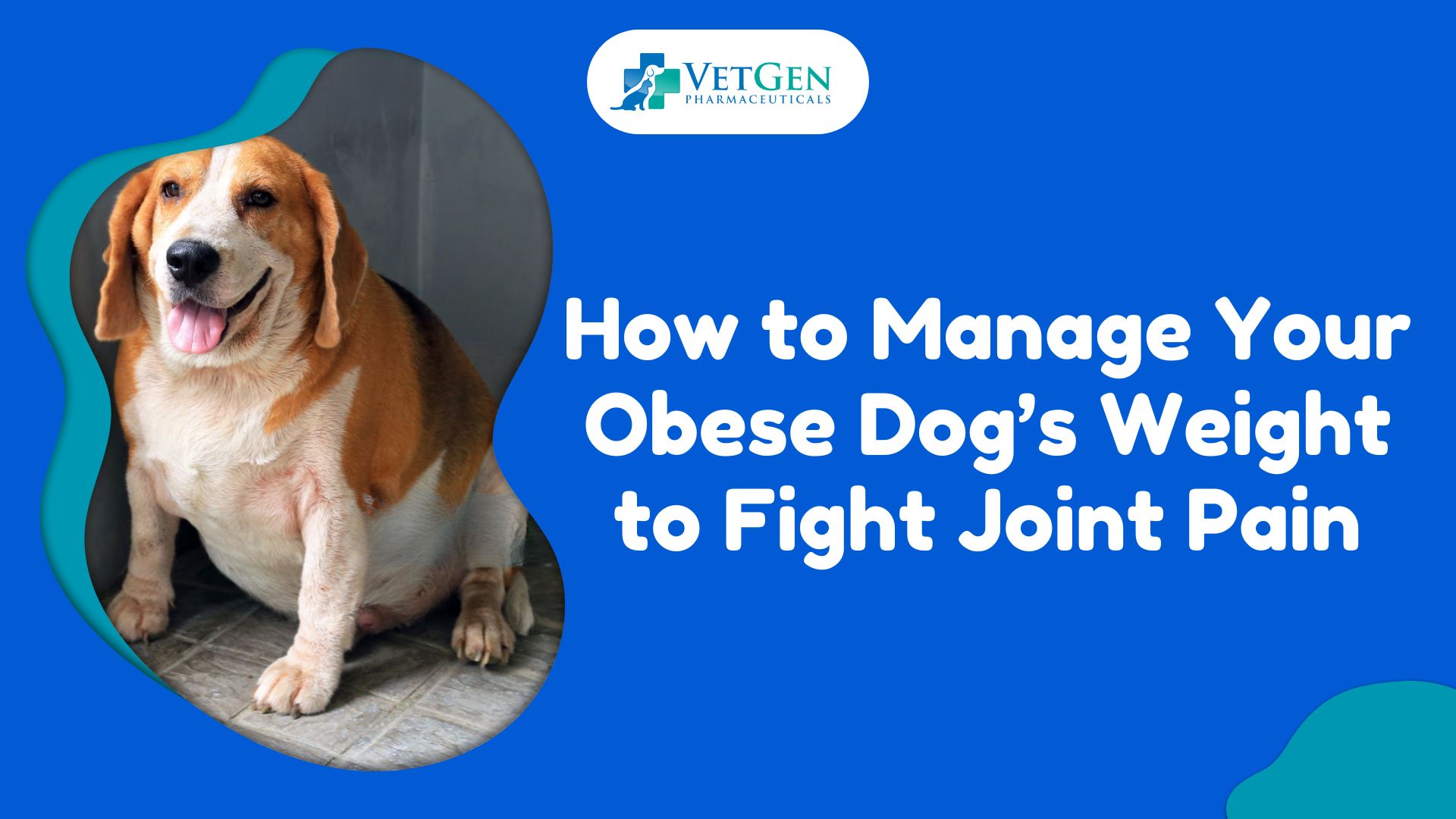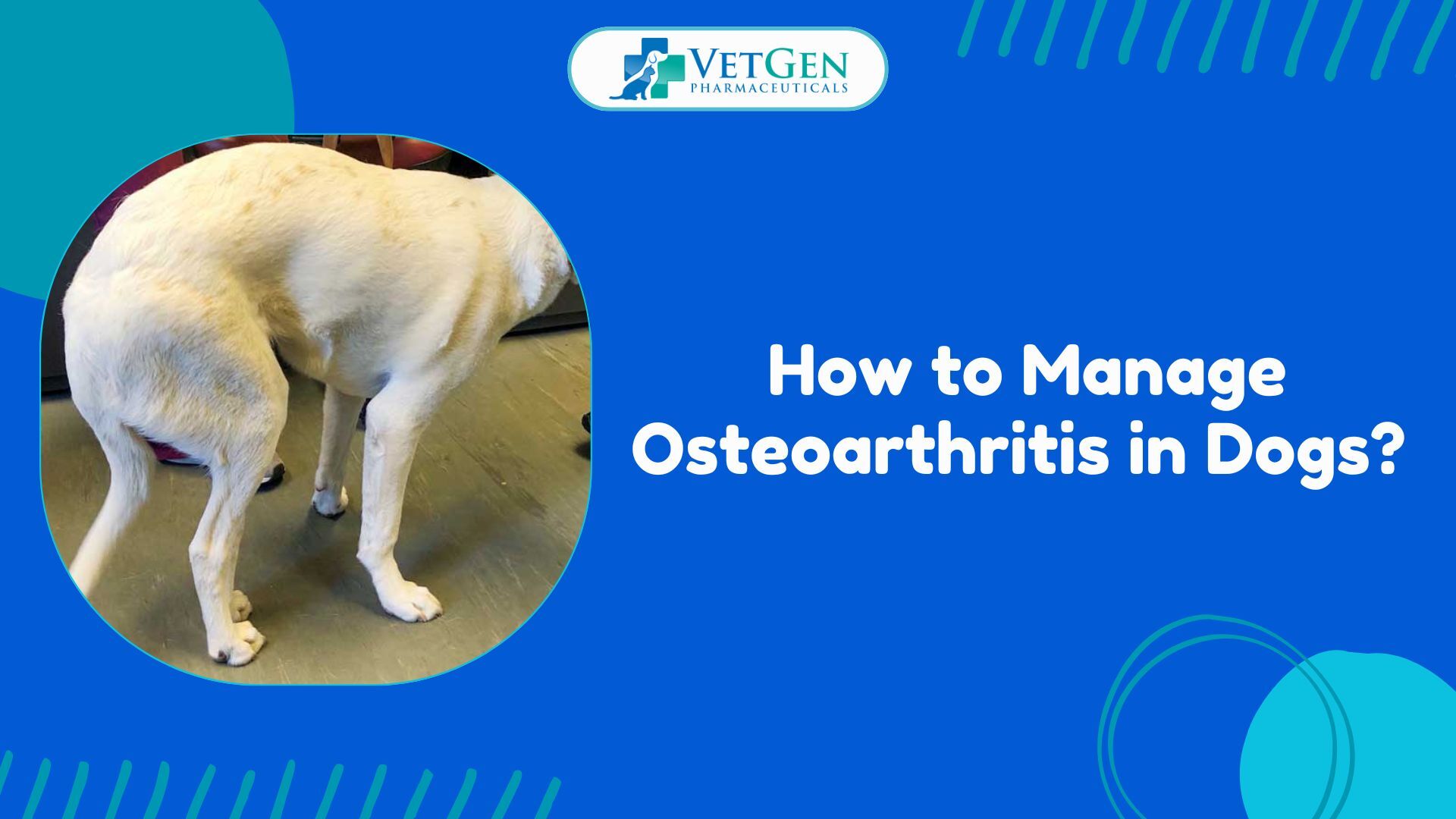Did you know that weight-management is an effective way to fight your dog’s joint pains?
While it may be difficult to say no to your furry friend with those adorable eyes, denying them a piece of meat on your plate is in their best interests.
Obesity is the biggest concern if you tend to feed your dogs your leftovers!
According to statistics, over 50% of dogs in the US are either overweight or obese.
Because many are working from home now, this number could now be significantly higher!
Managing your dog’s weight is the first line of defense against obesity and is important for many reasons.

Just like people, obesity affects dogs of all ages, but it is more pronounced in middle-aged to senior dogs.
Managing your pet’s weight from an early age is highly recommended to reduce the risk of developing obesity and other weight-related issues like diabetes, high blood pressure, and cancer.
Obesity is a leading cause of joint pain in dogs. So, managing your dog’s weight can help fight joint pains.
How Excess Weight Leads to Joint Pains
The most common weight-related joint issues occur when excess weight destabilizes your dog’s joints leading to abnormal movements.
It leads to the grinding of the cartilage in the joint socket.
If left unattended, the cartilage erodes, leading to bone-to-bone rubbing.
Bone grinding against bone is just as painful as it sounds and can worsen if the rubbing leads to chronic inflammation.
Limping is the most obvious sign that your dog is experiencing joint pain.
But, there are other subtle signs to watch out for, like trouble rising from a resting position, difficulty with everyday activities, reluctance to jump and run, and reduced playfulness.
Watching your dog bear the pain just to get to the door to welcome you is heartbreaking, to say the least.
Fortunately, managing your pet’s weight can relieve joint pain.
Top 6 Tips to Manage Your Dog’s Weight and Fight Joint Pain
Managing your dog’s weight to fight joint pains and other weight-related issues is one of the core duties of a dog-parent.
A study by the University of Glasgow recorded a significant reduction in joint pain in obese dogs after a weight loss of just 6.1- 8.85% body weight.
Managing your dog’s weight can also help prevent joint issues from developing in the first place.
Here are 6 tips to manage your dog’s weight and relieve any joint pains:
1. Always Feed your Dog Healthy Diets
An unhealthy diet with high-calorie foods is the leading cause of weight gain in dogs.
To relieve your pal’s joint pain, consider adjusting their diet from processed dog foods to healthy raw foods.
Most manufactured pet foods have processed out healthy nutrients like protein.
They are high in calories and carbs.
Best human food for dogs like cheese and yogurt are loaded with proteins, fats, vitamins A, B6, and D, calcium, iron, and other essential minerals that can strengthen your dog’s bones.

Raw carrots are packed with vitamins, high fiber content, and is low on calories.
Other healthy foods to manage your dog’s weight include fish, raw meat, and fruits like apples and watermelon.
Adjusting your pal’s diet from processed pet foods to healthier options can help you manage weight and reduce joint pain.
You can enhance the effectiveness of your dog’s healthy diet using supplements.
The best joint supplement for dogs is packed with ingredients that help manage joint pain and inflation.
2. Weight Loss Diets
An ideal way to manage your dog’s weight is through a weight loss diet that contains the appropriate nutrient and caloric levels.
According to research by the U.S. National Library of Medicine, diets that can reduce weight in dogs contain 48% high-quality protein and 28% total dietary fiber.
These are upper limits, which means you still need to talk to your vet to get the appropriate nutrient and caloric levels for your dog.

The best weight-loss diets for your pal should also ensure that they are full. Starving your furry friend defeats the purpose.
Your vet can recommend nutritional therapy if your dog has serious weight issues or extremely obese.
3. Regular Low-Impact Exercises
Regular low-impact exercise is recommended for managing weight to fight joint pains.
Normal or rigorous exercise routines can do more damage than good if your dog is obese and experiencing joint pains.
You can talk to your vet to come up with the appropriate exercise regimen for your dog’s lifestyle, life-stage, and joint pain.
Low-intensity activities like leisurely walks can help dogs with hip dysplasia and arthritis.
Swimming can improve flexibility, stimulate blood and nutrient flow to the joints, and build muscle mass to stabilize your dog’s joints.
If you opt to take your pal on a walk, always use a leash to moderate their pace.
Keeping your dog on-leash can also discourage rigorous activities like running and jumping.
Slowly increase the length and intensity of your walks while lowering the calories in your dog’s weight loss diet to combat obesity and weight-related joint pains more effectively.
Joint supplements for dogs can also help boost the effectiveness and impact of exercises.
4. Hip and Joint Supplements
Regular exercise is an important part of a well-rounded weight loss routine.
But, joint pains can make it difficult for your dog to engage in their exercises. This is where joint supplements come in handy.
A vitamin supplement will encourage your pal to engage in low-intensity activities.

Several studies have shown that vitamin formulations containing Glucosamine, chondroitin, MSM, and Manganese can reduce joint pain in dogs and improve their mobility.
Hip and joint supplements for dogs with special formulations of vitamins will help relieve your dog’s joint pains and lose weight quicker.
It is effective in managing weight in dogs of all ages and delivers quick and long-lasting results.
5. Monitor your Dog’s Food
Even the healthiest foods can lead to weight gain if consumed in large portions and more regularly than recommended.
You have to measure the amount of food you’re feeding your dog to manage their calorie intake more accurately.
Healthy foods for dogs like rice are rich in carbohydrates and can increase your pet’s weight if you let them eat all day long.

Use a measuring cup to ensure you always feed your dog the recommended amount.
You also have to monitor how many days you feed your dog specific foods like meat and fish in a week.
Create a timetable to avoid feeding your dog the same type of food more thrice per week.
Measure, monitor, and adjust to help your dog slim down quicker and relieve their joint pain.
6. Use Healthy Treats
The ideal option is to avoid giving your dog excessive treats, scraps, and leftovers.
But if you can’t resist your pup’s adorable begging eyes, the next best course of action is to use healthy treats like carrots or green beans.
These low-calorie options have high fiber content and can fill up your pup.
A pup with a full stomach is less likely to beg!
Using healthy treats like baby carrots and broccoli regularly instead of juicy chicken will discourage your pup from begging.
At VetGen Pharmaceuticals, we are dedicated to ensuring your dog maintains an active lifestyle for you two to enjoy each other’s company for many years to come! To this end, we offer the best hip & joint supplements for dogs that contain an all-natural formulation of vitamins. You can rely on our joint supplements to relieve your dog’s joint pain and boost the impact of their exercises.






